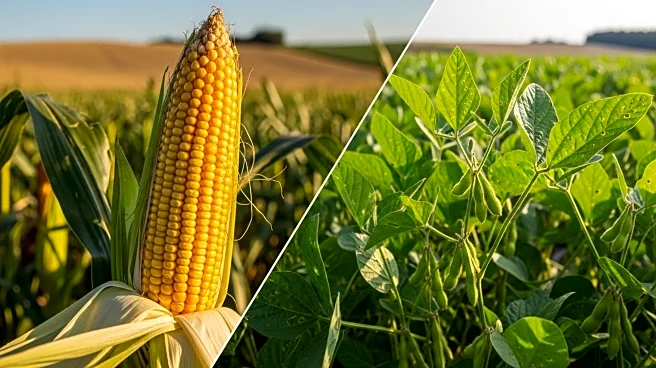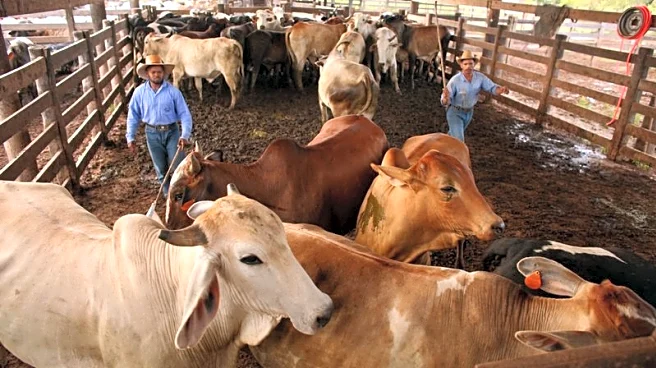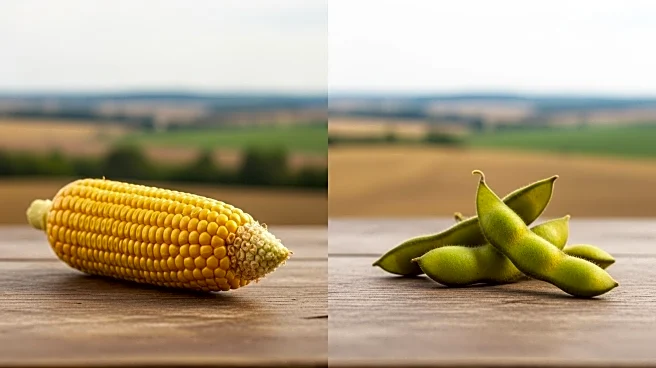What is the story about?
What's Happening?
The U.S. agricultural sector is experiencing a significant divergence in the fortunes of its two major crops, soybeans and corn, due to ongoing trade tensions with China. Soybean exports have been severely impacted by retaliatory tariffs, with China imposing a cumulative tariff of 34% by March 2025, making U.S. soybeans less competitive compared to Brazilian and Argentine suppliers. This has led to a drastic reduction in new crop export orders and a drop in soybean prices. Meanwhile, corn exports have seen an even more dramatic decline, with a 98.8% year-over-year decrease by August 2025, driven by a 65% tariff on imports exceeding a quota. This situation highlights the fragility of U.S. agricultural trade strategies in the face of China's dominant demand for commodities.
Why It's Important?
The divergence in soybean and corn exports underscores the vulnerability of U.S. agricultural trade policies and the risks associated with over-reliance on a single buyer like China. The decline in exports has significant implications for U.S. farmers, who are now seeking alternative markets and lobbying for trade deals to mitigate losses. The situation also affects global supply chains, with Brazil and other countries stepping in to fill the gap left by U.S. exports. This shift could lead to long-term changes in global agricultural trade dynamics, impacting prices and market access for U.S. producers.
What's Next?
U.S. soybean producers are focusing on diversifying their markets, targeting regions such as the European Union, Japan, and South Korea. For corn, the challenge is more complex, as China continues to diversify its supply chains. U.S. producers may need to explore new niches, such as high-protein corn varieties for livestock feed or ethanol markets. The U.S. agricultural sector must adapt to these changes by investing in alternative markets and leveraging competitive advantages in quality and sustainability.
Beyond the Headlines
The trade tensions with China have broader implications for U.S. agricultural policy and global trade relations. The situation highlights the need for diversification and innovation in U.S. agriculture to reduce dependency on single markets. It also raises questions about the long-term sustainability of current trade practices and the potential for new trade agreements to reshape global agricultural markets.
AI Generated Content
Do you find this article useful?

















